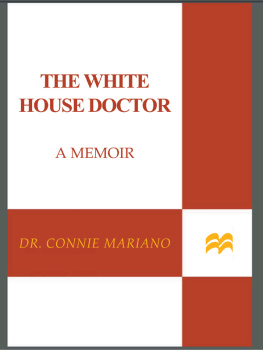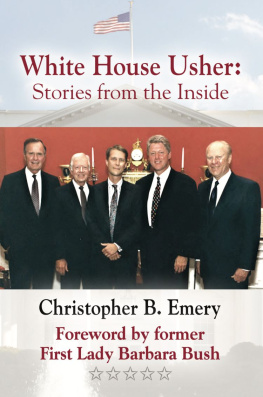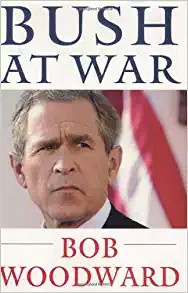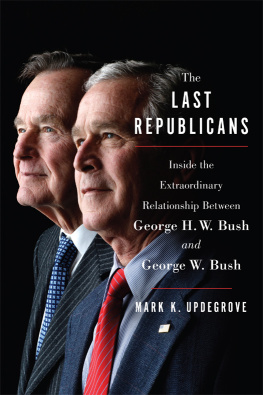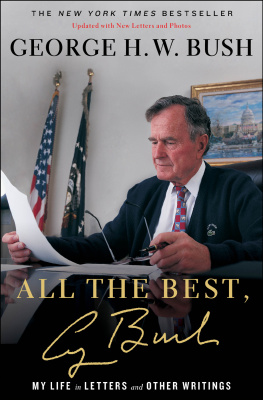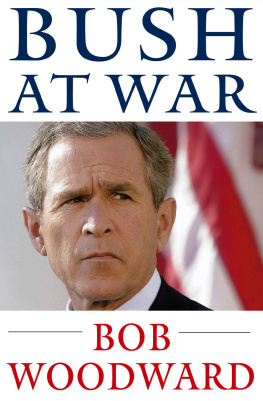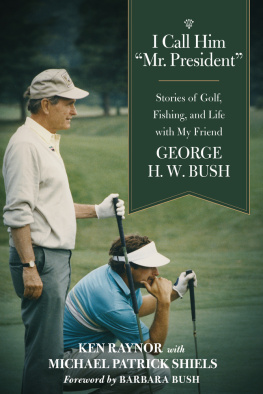Acknowledgments
I never planned to write this memoir. Instead, I was interviewed frequently by others who went on to write and publish their own books about what I said and did. Always the interviewee, never the author. So my competitive nature compelled me to tell my own story in my own words.
My first thanks go to bestselling author, physician, and dear friend Michael Palmer, who showed me how to make rhino stew. Without him I would have never had the courage and insanity to put thoughts to paper.
To my First Patient, former President Bill Clinton, thank you again for your trust in me and for the kind words of this Foreword.
To my agent, Susan Crawford, my thanks for your courageous spunk in taking care of me. Nobody climbs mountains better than you.
To my word guru and mapmaker, John Nelson of Bookworks Ltd., thank you for your brilliant editing, brainstorming, wise counsel, and for those inspirational kicks in the ass when I needed it. You made this book a lot more fun to write.
To my wonderful editor, Marcia Markland of Thomas Dunne Books, St. Martins Press, my appreciation for your sage guidance. You can lead the dance anytime.
My thanks to Jim Mac McLeod, my former black cloud medic who became the white cloud office manager of my private practice. Thank you for your patience and encouragement as I balanced clinic and chapters. Thanks for the memories!
My gratitude to my patient patients for allowing me to share my dreams of writing this book. I hope you all buy several copies and continue to eat in moderation, exercise regularly, and continually ask yourself, What would make my life better?
Thanks to my assistant, Lisa Hebestreit, for her research assistance in the writing of this book, and to my clinic concierge coordinator, Rachel Leonard, for keeping the clinic appointments moving on my schedule.
My thanks to White House alumni Steve Bachar for rekindling my memory of that night in the Imperial Palace. A platter of bananas to you. Thanks also to Dr. Jeff Eschbach for travel reminders and allowing me to tell the world we called you Doogie Howser at the White House, and to Bill McGee for reminding me of the details.
Many thanks to Dr. Richard Tubb for his kindness, humility, and inspiration. You will always be number one in my book.
To Dr. Richard Dick and Leslie Ridenour, thanks for letting me stay at your house in Fond du Lac. It was the perfect setting to get the news about my promotion.
To my dear friends and Sedona Sisters: Maddy Williams for your loyal support and encouragement, and Georgia Bunn for your laughter and creative spark. To Lecia Scaglione, who candidly warned me when I told her I was contemplating writing this book, Remember when you write a memoir, you piss off two groups of people: the ones you mention and the ones you dont mention.
For the people I do mention, I hope you agree I got it right. And to those I did not mention, please forgive me, and realize I could not name you all.
And, finally, to my favorite president, John H. Weber, for your constant encouragement, protection of my writing time, and gentle, loving reminders to write the damn book, darling.
Well, here it is!
Foreword
By Former President Bill Clinton
Dr. Connie Mariano held many titles during her nine years at the White House: White House doctor; Physician to the President; Director of the White House Medical Unit. Rear admiral. In each case, Connie was the first: the first military woman to become a White House physician, the first woman director of the White House Medical Unit, and the first Filipino-American in American history to become a Navy rear admiral. For the daughter of a former Navy steward from the Philippines, this particular distinction awarded during my presidency meant a great deal to her and her family.
Throughout my entire presidency, Connie was at my side making sure I stayed healthy. She was with me during the happy times and the sad times, as well as in the historic and private moments. I trusted her with my life and the lives of my family. She bore up to the task with tireless patience and good humor. My family, staff, and I referred to her affectionately as Dr. Connie.
Dr. Connie took care of the White House cooks and cleaning staff the same way that she took care of presidents and world leaders: with straightforward honesty, compassion, and wit. The organization she directed for seven years, the White House Medical Unit, owes significant improvements to Dr. Connie. She transformed her medical organization into a state-of-the-art responsive medical team that brought twenty-four-hour on-site medical coverage to the presidency. She also created the specialized practice she termed Protective Medical Support that maps out the teams emergency-response plans.
The story of Dr. Connie Mariano began in humble circumstances, moved by struggle, faith, and courage, and resulted in great achievement. A little girl from the Philippines became the physician to the president of the United States; Dr. Marianos life indeed recounts a wonderfully American success story.
I never slept with the president. I did sleep with the former president. In fact, I slept with three of them, all at once, on Air Force One. Actually, it was more like a slumber party, which sounds even more bizarre. This all started on a very typical White House day that ended up as anything but typical.
Hey, Doc, weve got a tourist down in the State Dining Room.
I looked up from my computer on the mahogany desk in my office on the ground floor of the White House. The tall dark-haired man standing in my doorway was a Uniformed Division officer of the Secret Service. I recognized the guards face, but his first name escaped me. Even after seven years at the White House, I couldnt remember the names of all the guards who sat in a post outside my office, the doctors office, across the hallway from the presidents private elevator.
Do you want me to call over to the clinic for the duty nurse to respond? he asked tentatively.
I stood up, clipped my Secret Service radio to my belt, and inserted my earpiece as I walked around the desk, grabbing the AED, the automated external defibrillator, and my medical bag along the way. He can back me up, but presidents, visiting dignitaries, kitchen help, andtourists get the same treatment.
Taking care of an ill or injured tourist is one of the first duties a White House physician assumes, even before meeting the first patient, the president of the United States. It was one of the first things I learned to do after arriving at the White House in 1992 as the Navy physician to the White House. It wasnt the first time I had taken care of someone who had passed out. Years of working as a Navy doctor in emergency rooms, clinics, teaching hospitals, and onboard a destroyer tender in the Pacific made me an expert in critical care. What was special this time was the setting: the grandeur and elegance of the State Dining Room of the White House.
Please dont let anyone die on my watch , I prayed as we rapidly ascended the marble staircase to the State Floor. The medical bag and defibrillator I was carrying were quite heavy. This was going to be my workout for the day: stair climbing and lifting medical bags. No chance for a run on the Mall. I was scheduled to leave in one hour with the president and first lady for an overseas trip.

